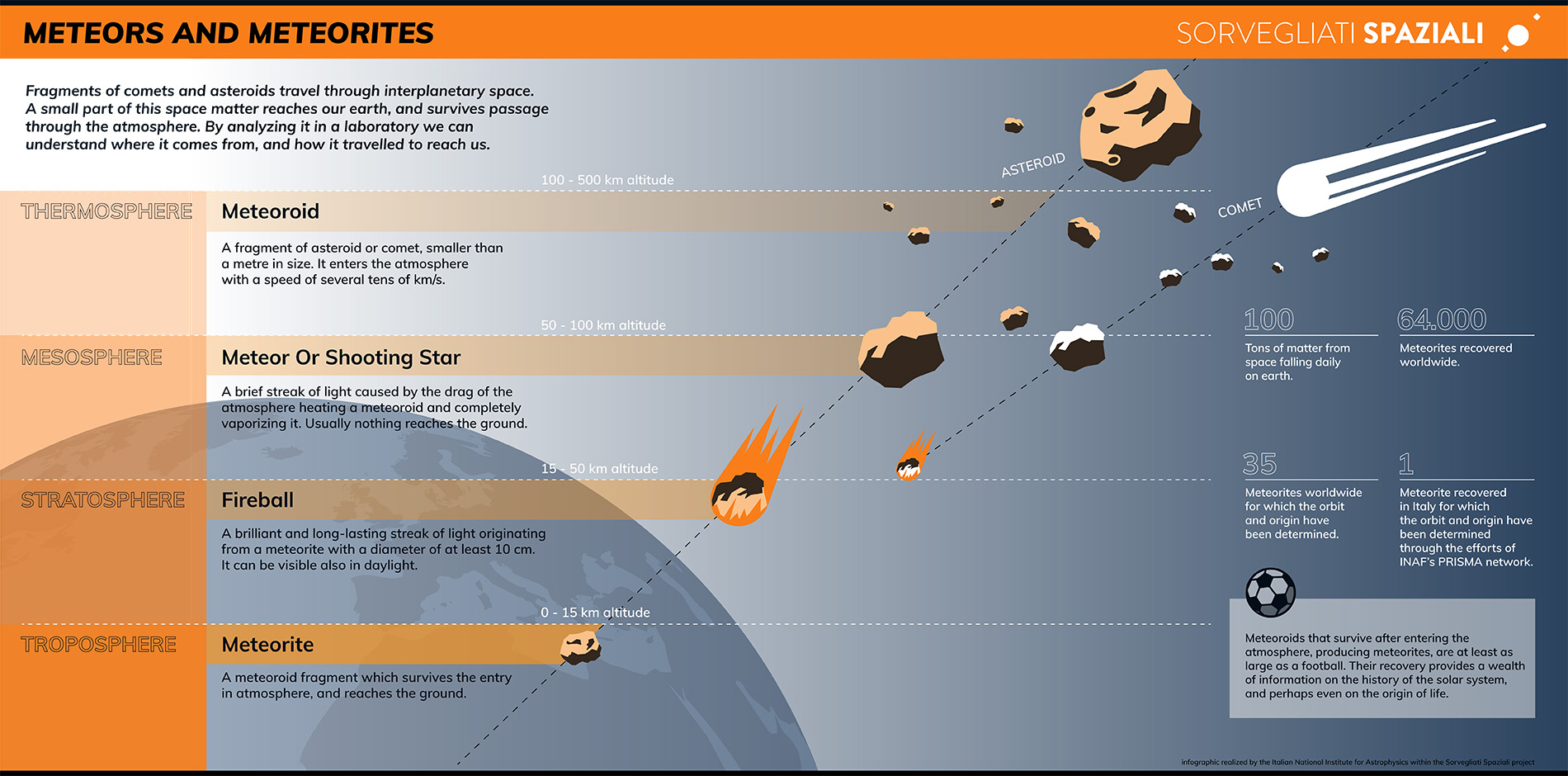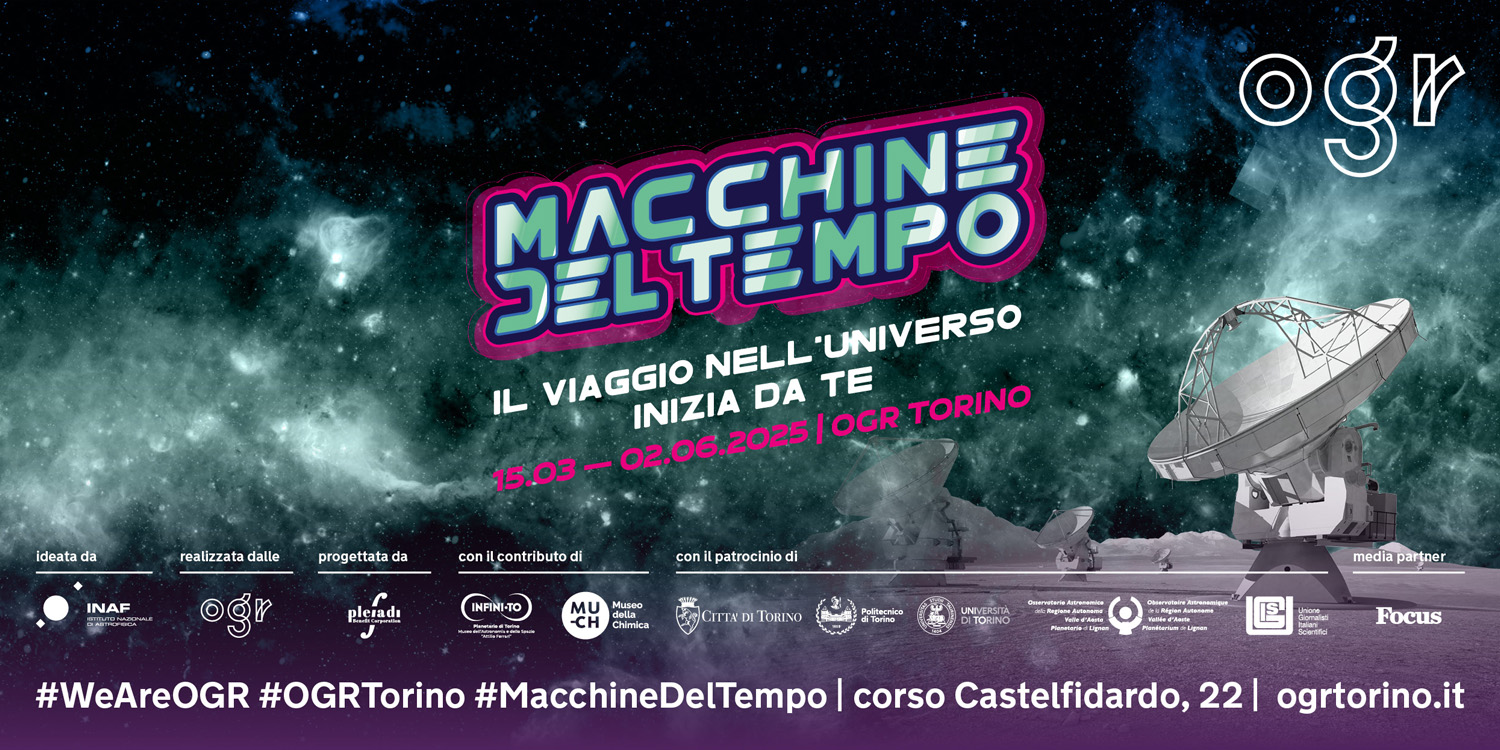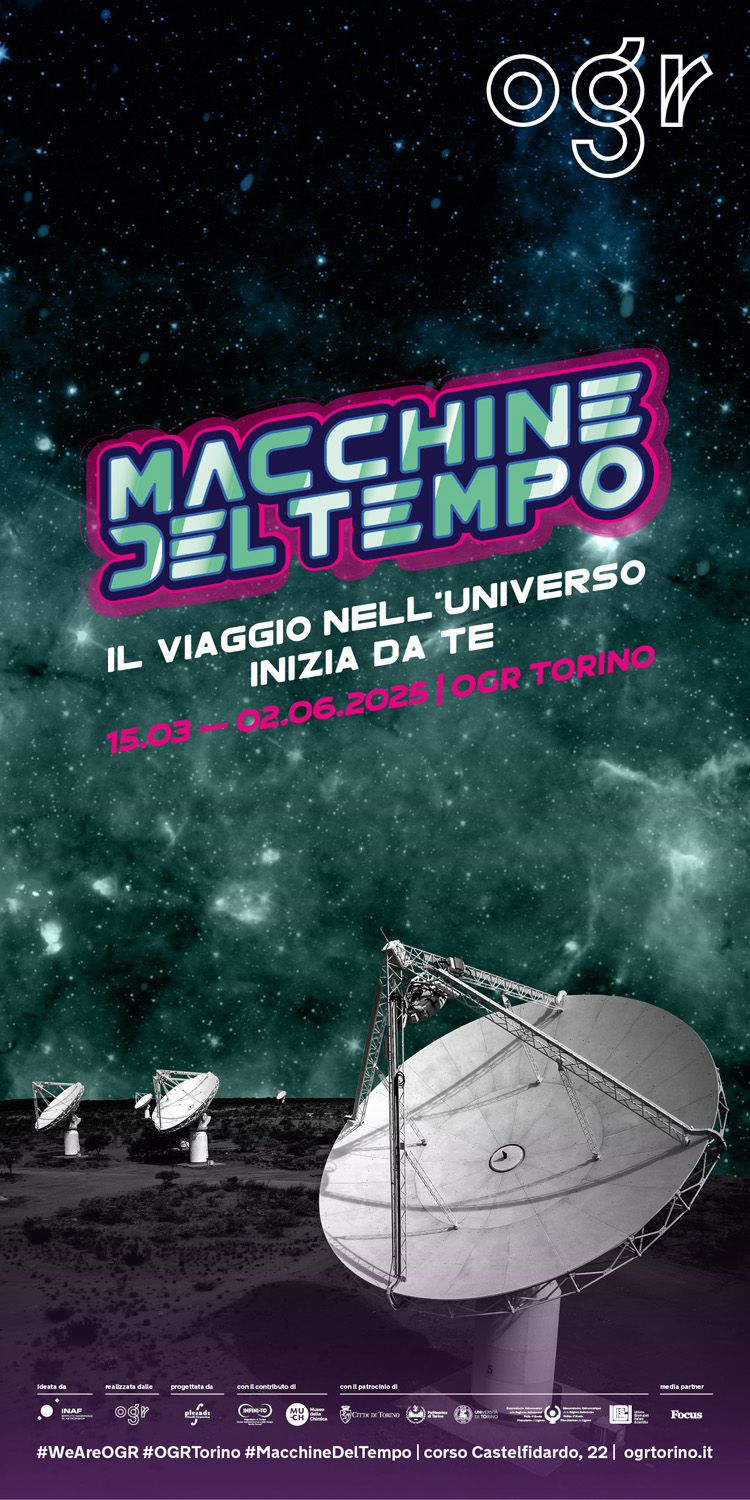Meteors
and meteorites
Commonly known as “shooting stars”, meteors are one of the best known and most fascinating astronomical phenomena. Their luminous trails are caused by fragments of comets or asteroids, which burn and vaporize after entering the Earth’s atmosphere with a speed of over 10000 km/h. Some fragments, which we call meteorites, can reach the ground. They are fundamentally important to understand the history of the Solar System.
Starting in the 1950’s, observing networks were set up in different countries to continuously monitor the night sky and record meteor events, study their origins, and aid in the recovery of meteorites.
Download the infographic by clicking here.
Specifically
Meteor, meteorite, and meteoroid are very similar words, but have different meanings, and are all related to the phenomenon commonly known as “shooting stars”. But no stars are involved here: the subjects are asteroids and comets.
Ceres – the celestial body discovered on 1st January 1801 by the Italian astronomer Giuseppe Piazzi, classified initially as an asteroid and later, since 2006, as a dwarf planet – is just the first of a multitude of objects populating the main asteroid belt between Mars and Jupiter. Since then astronomers have discovered over 700 thousand more of them, with sizes varying from several hundreds of km to just a few metres or less. They are rocky bodies that never coalesced into a planet, or fragments formed in a collision. Asteroids themselves are subject to collisions, and eject their fragments into interplanetary space.
Comets, instead, have been known since antiquity, and were considered as signs of good luck or as bad omens. We now know that they are celestial bodies formed by rocks, dust, and ice, and that they originated in the furthest reaches of the solar system. When a comet approaches our star, it reaches temperatures high enough to make it sublimate, or slowly dissolve, developing a tail which can become spectacular, and leaving debris in its wake.
Fragments of comets and asteroids that wander in interplanetary space are collectively known as “meteoroids”. When they enter the earth’s atmosphere at several tens of thousands of km/h, they burn and produce the light streaks known as “shooting stars”, which astronomers call “meteors”.
Astronomer Giovanni Schiaparelli established in 1862 that meteor showers were caused by the passage of earth through a cloud of cometary debris.
Each day an average of 100 tons of meteoroids enter our atmosphere. Those of cometary origin burn out completely at altitudes between 90 and 120 km, and produce the yearly meteor showers. The largest and best known of these are the Perseids in August, the Leonids in November, and Geminids in December.
Meteoroids originating from asteroids are more cohesive and larger than the cometary fragments, and upon entering the atmosphere they generate the so-called fireballs, meteors which can be as bright as the moon.
Meteoroids as large as a football, or larger, are likely to not burn completely during their streak through the atmosphere, and some fragments may reach the ground. These residuals are called meteorites.
Astronomers estimate that at least one meteorite reaches the ground each day. But only few of them are found, because 75% of the earth’s surface is covered by water, and there are also many desert areas.
About 64000 meteorites have been found in the whole world, but only 35 of them are associated with observations that allow to extrapolate their orbit around the Sun before they entered the atmosphere, and therefore to identify their origin.
It is fundamentally important to recover and study meteorites, because they are basically space fossils: they provide vitally important information on the formation and evolution of the solar system, and could shed light on the origin of life. Most meteorites, in fact, are more than 4 billion years old, and have not changed since then. Furthermore, the prompt recovery of freshly fallen meteorites is crucial, because it allows to analyse cosmic matter before it becomes contaminated by the terrestrial environment.
Many observing networks have been established throughout the world, since the 1950s, for the purpose of detecting bright meteors. They include the European Fireball Network, NASA’s All-sky Fireball Network, and France’s FRIPON.
INAF’s role
With the contribution of the CRT Foundation, the PRISMA network (Prima Rete Italiana per la Sorveglianza sistematica di Meteore e Atmosfera) has been operating in Italy since 2016. Coordinated by INAF, the network consists at present of about 60 operational all-sky cameras that monitor the sky, placed for the most part in northern and central Italy, and 10 more which are being installed or acquired. PRISMA is part of the international collaboration which emanated from the FRIPON project.
The main scientific purpose of PRISMA is to monitor bright meteors to determine the orbits of the objects from which they originate, particularly asteroids, and to calculate the impact areas of meteorites. PRISMA has already achieved a first great success, with the estimate of the impact area and the consequent recovery of meteorites close to Cavezzo (near Modena) on 4th January 2020, less than 3 days after the impact. This was the first such recovery in Italy, and only the 35th ever worldwide.
The PRISMA project sees the participation of researchers and scientists, but also amateur astronomers, students, and common citizens. Schools are involved through the associated didactic programme, and with astronomy labs which allow students and teachers to take part in the project’s research activities, side by side with the researchers.
For further informations take a look at Friends’ sites.


